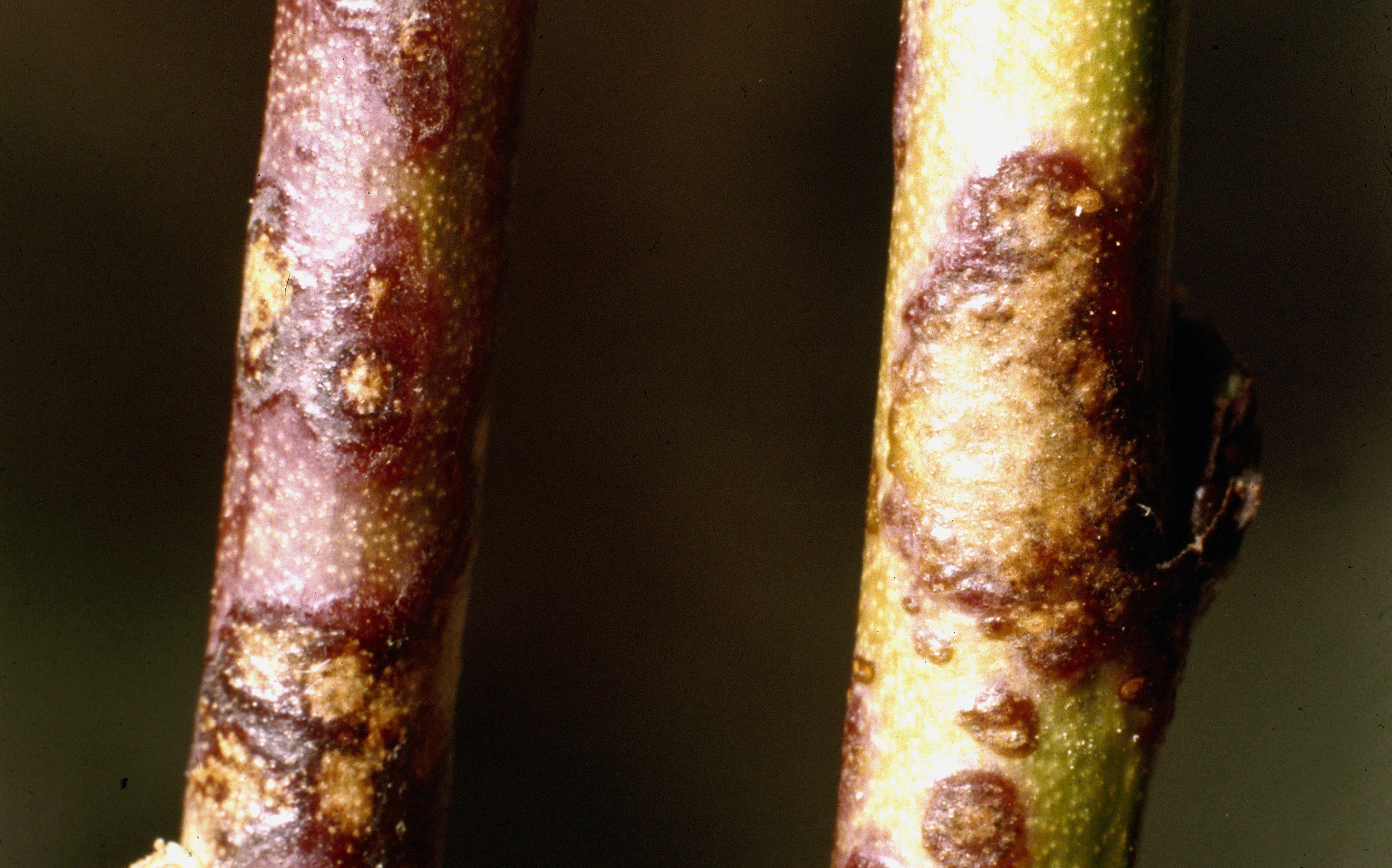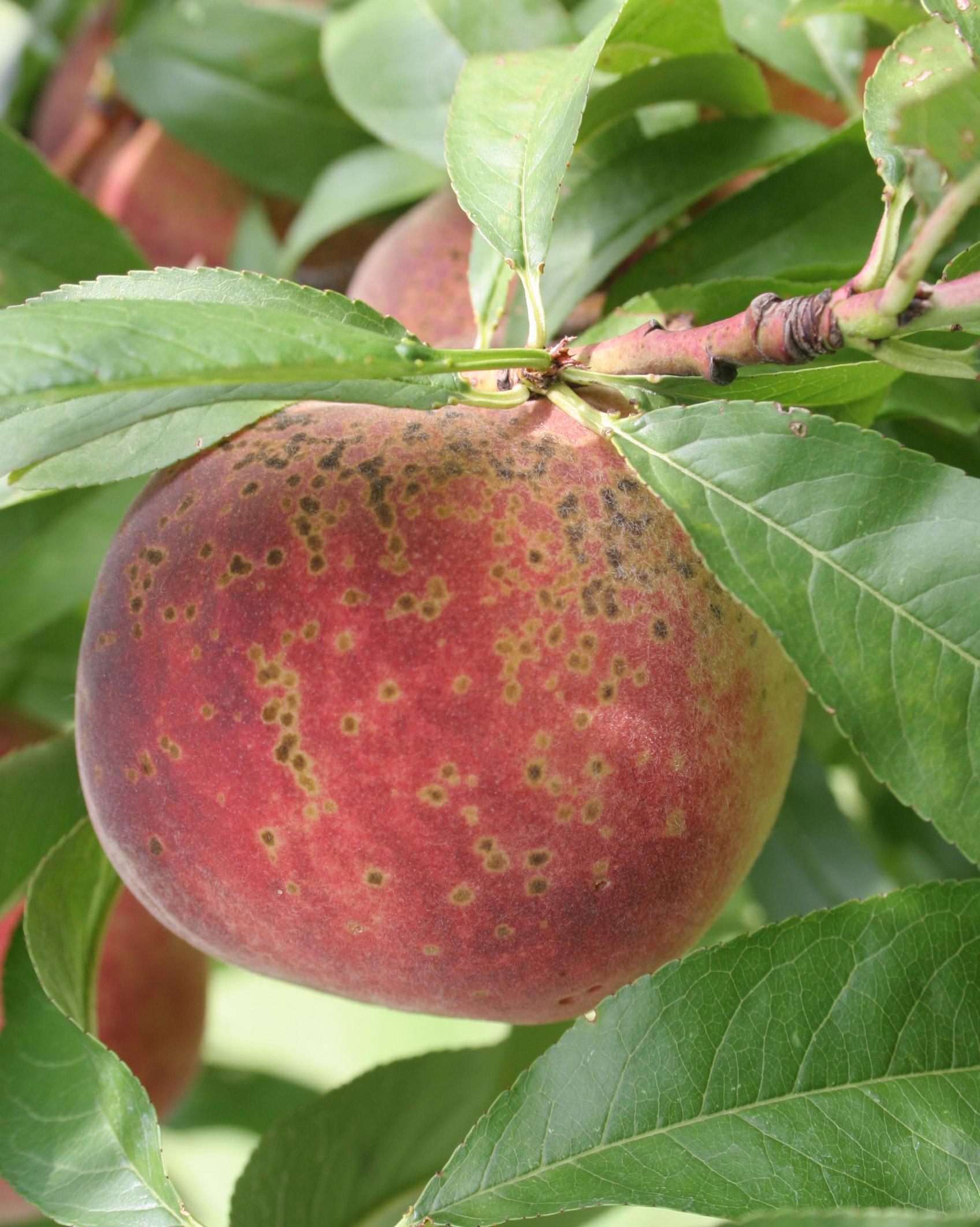Scab (Peach Scab) of Peach
Return to Diseases
Scab, also known as peach scab (Cladosporium carpophilum), results in superficial lesions on skins of peaches and other stone fruit. Small, velvety, olive-green spots form on young fruit, usually near the stem end. Fruit can become infected anytime during the season, especially if conditions remain wet. Spots become darker, expand to 1⁄4inch diameter, and may crack. Lesions may run together if disease is severe, and fruit may drop in extreme cases. A corky layer underneath the skin develops but does not expand into the flesh. Twig infections cause raised lesions on current season’s wood; they resemble bacterial leaf spot lesions. The fungus overwinters in twig lesions. Leaf infections are uncommon. Infection is more severe when conditions are wet after petal fall. Symptoms develop 6 to 12 weeks after infection occurs.

Peach scab lesions on small branches.
(Photo: USDA-CES Slide Series, Clemson University, Bugwood.org)

Peach scab lesions on fruit.
(Photo: John Strang, University of Kentucky)
Management:
- Increase air circulation to encourage drying of plant tissues (pruning, thinning, spacing).
- Use proper sanitation (remove infected fruit; remove diseased twigs; discard debris away from orchard).
- Use fungicides either at petal fall or at shuck split.
- Peel fruit to remove diseased skins.
